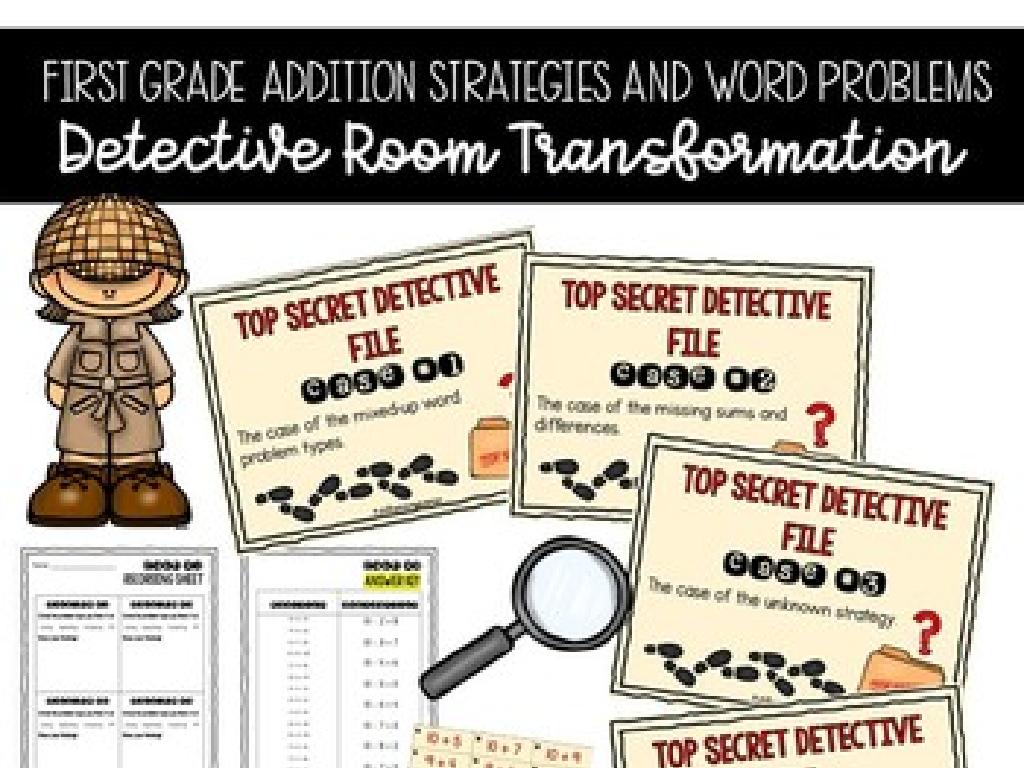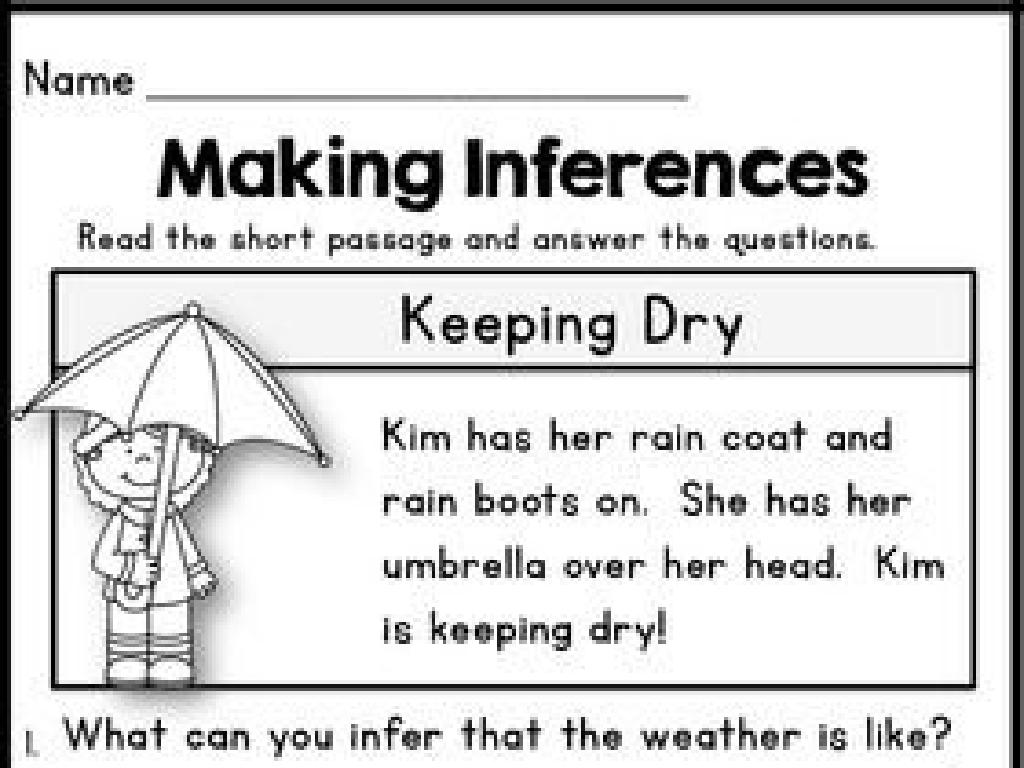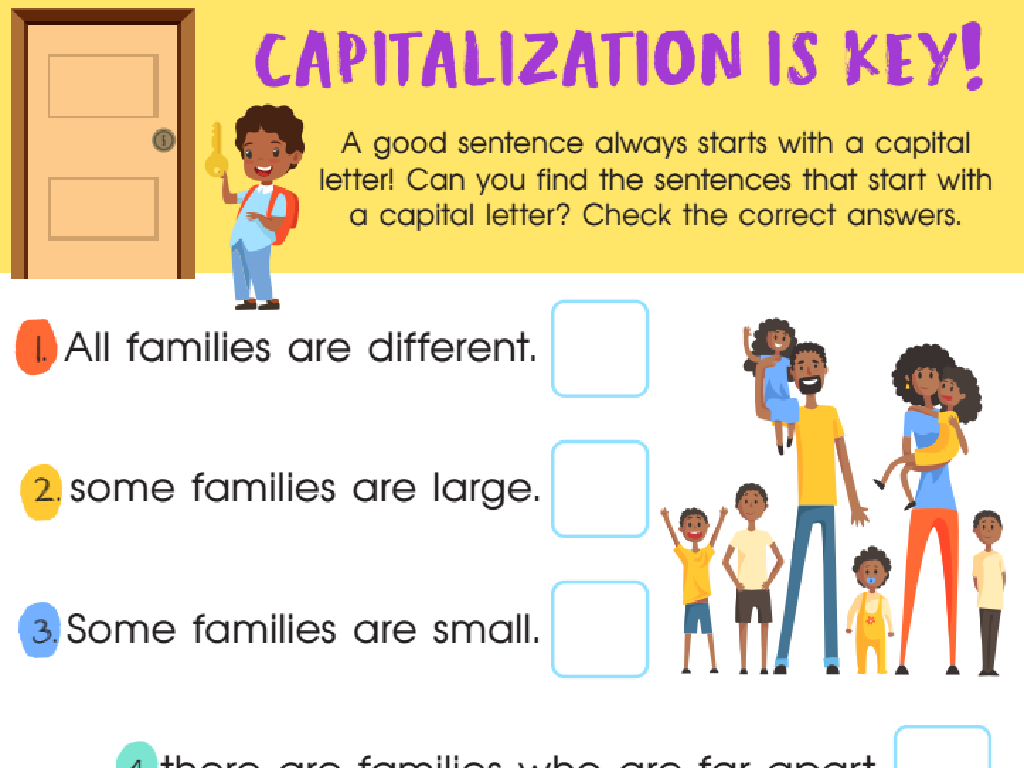Add In Any Order
Subject: Math
Grade: Second grade
Topic: Properties
Summary: This engaging second grade math lesson introduces the commutative property of addition, showing students they can add numbers in any order and get the same sum every time. With hands-on activities, group practice, and relatable examples, students will explore patterns, use number blocks, and solve problems to reinforce their understanding. These interactive exercises help develop number sense, problem-solving skills, and prepare students for more advanced math concepts-making math both fun and accessible.
Please LOG IN to download the presentation. Access is available to registered users only.
View More Content
Math Properties: Add in Any Order
– Discover ‘Add in any order’
– You can add numbers in any order and the sum will be the same!
– It’s a special math property
– Fun examples to learn
– Example: 2 + 3 is the same as 3 + 2. Both equal 5!
– Practice with classmates
– We’ll work together to try different sums
|
This slide introduces the commutative property of addition, known to second graders as ‘Add in any order’. Explain that no matter how we rearrange the numbers we are adding, the total sum remains unchanged. Use everyday examples like adding apples or toys to make it relatable. Provide simple addition problems and have students solve them by adding in different orders to demonstrate this property in action. Encourage students to work in pairs or small groups to come up with their own examples and share with the class. This activity will help solidify their understanding through practice and peer learning.
Add in Any Order: Commutative Property
– ‘Add in any order’ explained
– Adding numbers in any sequence gives the same total.
– Commutative Property of Addition
– A fancy term for ‘add in any order’.
– Numbers can switch places
– Like 2 + 3 is the same as 3 + 2.
– Same result with different orders
– 4 + 5 + 6 is same as 6 + 4 + 5.
|
This slide introduces the concept of the Commutative Property of Addition, which is a fundamental principle in mathematics that allows numbers to be added in any order without changing the sum. It’s crucial for second graders to understand that the order of addends does not affect the total, which can simplify calculations and improve their number sense. Use examples with small numbers to demonstrate this property, and encourage students to try it out with different numbers during the lesson. This concept also lays the groundwork for understanding more complex mathematical operations in the future.
Let’s Try Together: Adding in Any Order
– Example: 2 + 3 equals 3 + 2
– Both combinations equal 5
– This is called the Commutative Property
– Commutative Property means you can add numbers in any order and get the same result.
– Practice with different numbers
– Try with your own numbers, like 4 + 1 or 5 + 2.
|
This slide is an interactive class activity to help students understand the Commutative Property of Addition, which states that numbers can be added in any order without changing the result. Start by showing the example on the slide, then ask students to come up with their own sets of numbers to add in different orders. Encourage them to share their findings with the class. Possible activities include pairing students to check each other’s work, using manipulatives like blocks or counters to visualize the concept, or creating a classroom chart with different number combinations to demonstrate the property in action. The goal is for students to recognize patterns and become comfortable with the idea that addition is flexible.
Practice Time: Adding in Any Order
– Try adding numbers yourself
– Add numbers in any order
– Whether 2+3 or 3+2, the answer is 5
– Numbers can be rearranged
– 4+1+2 is the same as 2+4+1
– Addition is commutative
– Commutative property: a+b = b+a
|
This slide is meant for practice and reinforces the concept that in addition, the order of numbers does not affect the sum. This is known as the commutative property of addition. Encourage students to solve problems using different orders to see that the sum remains the same. For example, they can add 2+3 and then try 3+2 to see they both equal 5. Provide several sets of numbers for students to practice this concept. Possible activities include using manipulatives like counters or blocks to visually demonstrate the property, or pairing students to solve problems and check each other’s work.
Discover the Pattern: Adding in Any Order
– Explore patterns in addition
– Add numbers in various orders
– Try 2+3 and 3+2, do they equal the same?
– Observe any special outcomes
– Does changing the order change the result?
– Discuss our findings together
|
This slide is aimed at helping second-grade students understand the commutative property of addition, which states that numbers can be added in any order and the sum will be the same. Encourage the students to experiment with adding different numbers together in different sequences. Ask them to share if they notice that the sum remains unchanged regardless of the order. This will help them recognize patterns and understand that addition is flexible. During the discussion, reinforce the concept by using various examples and confirming their observations. This foundational understanding will be crucial for their future mathematical learning.
Class Activity: Add in Any Order
– Form small groups for activity
– Use number blocks to add numbers
– Each group gets blocks with different numbers
– Numbers can be added in any order
– This demonstrates the commutative property of addition
– Share findings with the class
|
This activity is designed to teach students the commutative property of addition, which states that numbers can be added in any order and the sum will be the same. Divide the class into small groups and provide each with a set of number blocks. Instruct them to create different addition problems by rearranging the blocks, then solve them to see if the sum remains constant. After the activity, each group will present their results to the class, reinforcing the concept through peer learning. For the teacher: Prepare several sets of number blocks, ensure each group has at least three different numbers to work with, and be ready to guide them through the process if they encounter difficulties.
Conclusion: Adding in Any Order
– ‘Add in any order’ mastered!
– Order doesn’t change the sum
– Whether it’s 2+3 or 3+2, the sum is always 5
– Practice makes perfect
– Keep practicing with different numbers
– Ready for more math adventures?
|
Congratulations to the class for learning that in addition, the order of numbers does not affect the total sum. This is known as the commutative property of addition. Reinforce this concept by encouraging students to practice with various numbers, both during class and at home. Remind them that understanding this property will make future math problems easier to solve. As they become more comfortable with this idea, they’ll be ready to tackle more complex math concepts with confidence.
Homework Challenge: Exploring Addition Order
– Find three sets of numbers
– Add numbers in different orders
– Example: 2 + 3 + 4 and 4 + 3 + 2
– Write down all your answers
– Check if the answers match
– Does changing the order change the result?
|
This homework activity is designed to help students understand the commutative property of addition, which states that numbers can be added in any order without changing the sum. Encourage students to find any three numbers, such as 2, 3, and 4, and add them together in different sequences. They should record their sums to observe that the total remains the same regardless of the order. This exercise will reinforce the concept that addition is flexible and help them become more comfortable with mental math. In the next class, discuss their findings and address any misconceptions.





